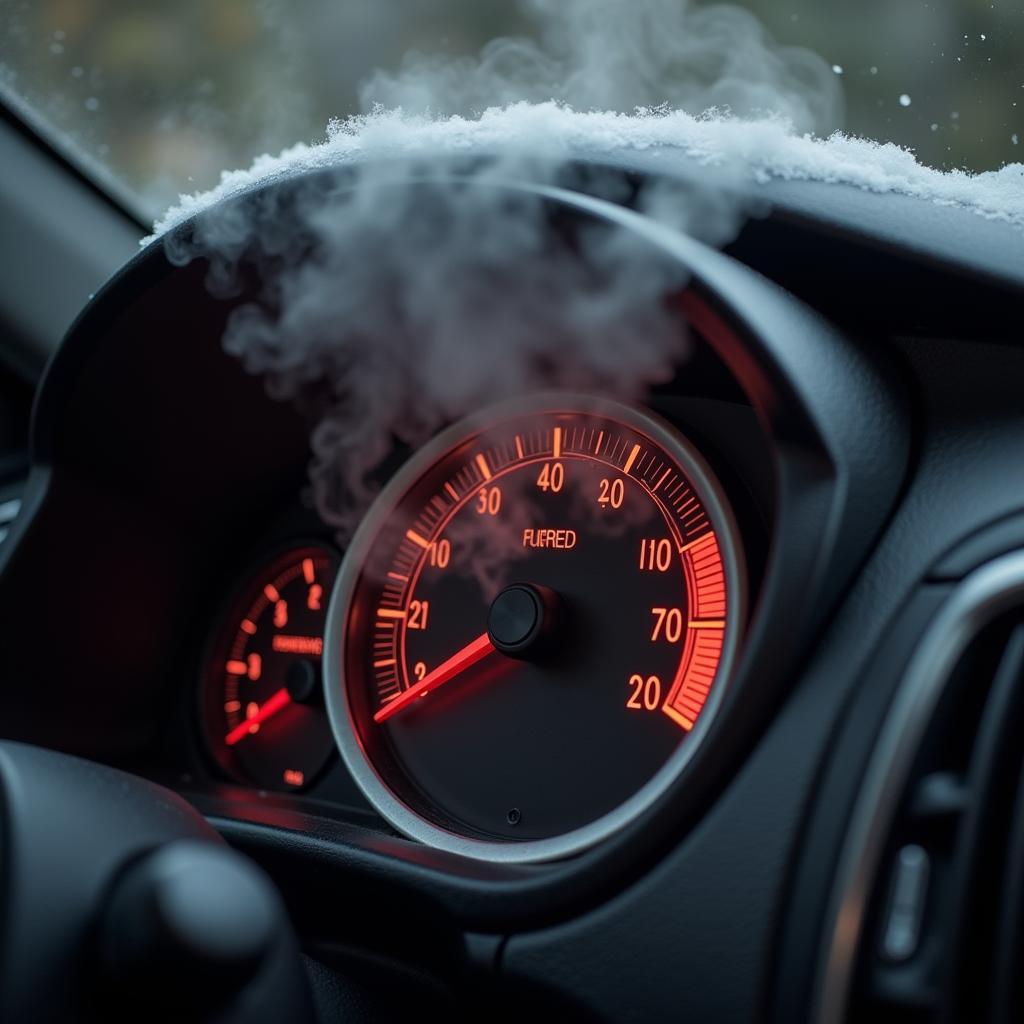A malfunctioning thermostat can lead to a host of Thermostat Car Problems, impacting your vehicle’s performance and potentially causing costly damage. Understanding how to identify, diagnose, and address these issues is crucial for every car owner and mechanic. This guide provides comprehensive insights into common thermostat car problems, helping you keep your engine running smoothly.
One common sign of thermostat trouble is overheating. Learn more about this and other issues in our guide on car thermostats problems.
Identifying Common Thermostat Car Problems
A vehicle’s thermostat regulates the engine’s coolant flow, ensuring optimal operating temperature. A faulty thermostat can disrupt this process, leading to various problems. Overheating is a primary symptom, often indicated by a temperature gauge reading higher than normal. Conversely, a stuck-open thermostat can prevent the engine from reaching its ideal temperature, resulting in poor fuel economy and increased emissions. Other signs include fluctuating engine temperature, coolant leaks, and heater malfunction.
 Overheating Car Engine Due to Thermostat Issues
Overheating Car Engine Due to Thermostat Issues
Diagnosing Thermostat Problems in Your Car
Diagnosing thermostat car problems requires a systematic approach. Begin by visually inspecting the thermostat housing for leaks or damage. Next, check the coolant level and condition. A low coolant level can mimic thermostat issues, so ensure it’s topped off correctly. Use an infrared thermometer to measure the temperature at the upper and lower radiator hoses. A significant temperature difference between the two hoses can indicate a stuck closed thermostat. You can also test the thermostat directly by removing it and submerging it in hot water while monitoring its opening temperature.
For more information on diagnosing thermostat issues, visit our guide on diagnosing thermostat problems car.
How to Fix Car Thermostat Temp Problems
Once you’ve diagnosed a faulty thermostat, replacing it is usually the best solution. While some minor issues might be temporarily resolved, a new thermostat ensures reliable performance. The replacement process involves draining the coolant, removing the thermostat housing, installing the new thermostat, and refilling the coolant. This procedure can be performed by a skilled DIYer, but consulting a mechanic is recommended if you’re unsure. Remember to use the correct type of coolant for your vehicle.
Learn more about specific temperature-related thermostat issues in our article on car thermostat temp problems.
Preventing Future Thermostat Car Problems
Regular maintenance is key to preventing future thermostat issues. Ensure your cooling system is flushed and refilled with fresh coolant according to your vehicle’s manufacturer recommendations. Regularly inspect the cooling system for leaks and address any issues promptly. Using the correct type of coolant and avoiding overheating your engine can also extend the life of your thermostat.
If you’re experiencing other car issues, you can find helpful information on our page about different car problems. Understanding your car’s needs is crucial for preventing future problems and maintaining optimal performance.
Expert Insight: “A well-maintained cooling system is vital for engine longevity,” says Robert Johnson, a seasoned automotive engineer. “The thermostat plays a critical role in this system, and neglecting it can lead to significant problems down the road.”
Why is my car overheating even with a new thermostat?
Sometimes, even after replacing the thermostat, your car might still overheat. This could be due to a faulty water pump, a clogged radiator, a leaking head gasket, or a malfunctioning cooling fan. It’s essential to diagnose the root cause to avoid further damage.
Expert Insight: “Always check the entire cooling system, not just the thermostat, when experiencing overheating issues,” advises Maria Garcia, a certified mechanic with over 20 years of experience. “A holistic approach is key to accurate diagnosis and effective repair.”
Conclusion
Thermostat car problems can range from minor inconveniences to major engine damage. Understanding how to identify, diagnose, and fix these issues can save you time and money. Regular maintenance and proactive care are crucial for preventing future thermostat problems and ensuring your vehicle’s optimal performance. For personalized assistance with your vehicle’s cooling system, connect with us at AutoTipPro. Call us at +1 (641) 206-8880 or visit our office at 500 N St Mary’s St, San Antonio, TX 78205, United States. We’re here to help you keep your car running smoothly. You can also explore more about dealing with therostat in car problems.





Leave a Reply